Year of the Gopher
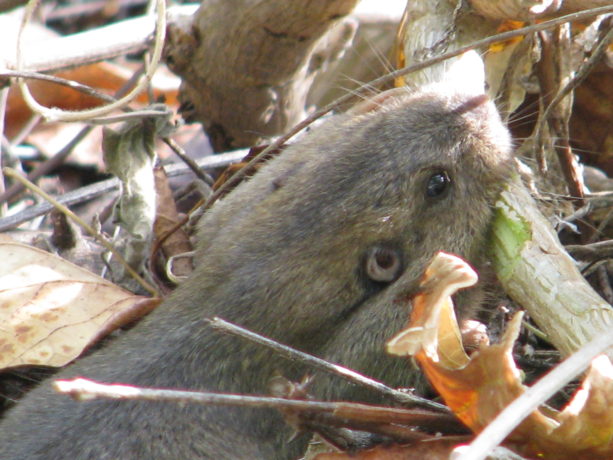
This year should have been dubbed The Year of the Gopher. Every year brings an increase (and decrease) in some element in nature. There are big earwig years, painted bug years, cabbage moth years, just as there seem to be good and bad years for certain crops. This year seems to be a big one for gophers.
Pocket gophers are native to Southern California, and have their special roles to play in the landscape. They aerate, their tunnels are homes to lots of other animals and insects such as Pacific Chorus frogs, toads and lizards. They are food for snakes, raptors and even greater egrets. Their tunnels allow rainwater to penetrate the soil. And, like any of us, if offered really tasty specialty food they’ll go for it.
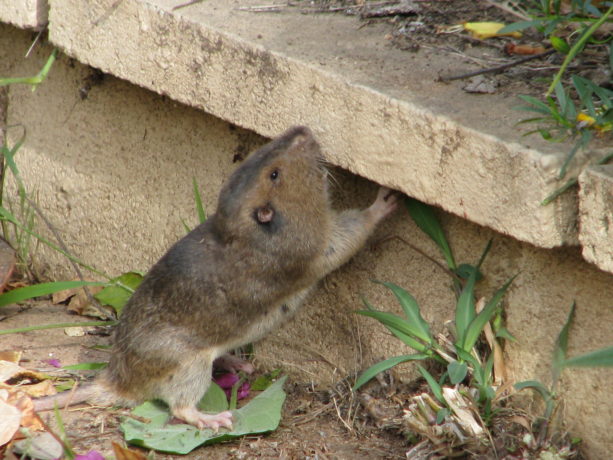
Gopher tunnels are prime real estate. As explained in a past post, it takes a considerable amount of energy for gophers to dig tunnels, and if you kill them, new gophers reoccupy the tunnels from surrounding property. They are territorial and so the young are always looking for opportunities to have their own tunnel system.
Methods we’ve been using to train our gophers have been challenged this year by the desperation of our gophers, caused no doubt by the changing weather and growth patterns. In our kitchen garden we’ve lost a lot of veggies this spring.
We don’t trap and kill here, so we work with animals because this is their home and habitat. Permaculture isn’t about taking over an area to the loss of everything that usually lives there, its about working with nature and learning from it. So the reason our kitchen garden has been attacked is that we didn’t prepare well enough to live with the gophers. The only way to keep plants safe is to have boundaries around root balls. Trees we plant in gopher cages, but vegetables -not so much.
So Miranda and I decided to bury 24″ tall 1/4″ wire around the garden.
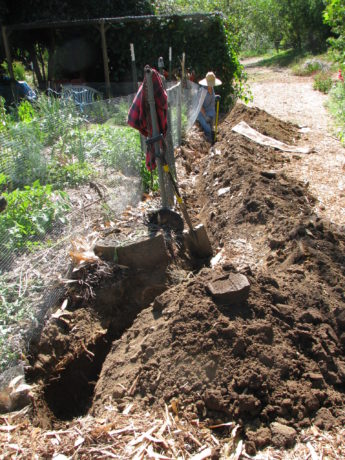
These tasks always sound so easy! Trenching through clay in the heat of early summer has been a challenge. Gopher tunnels dug for food collection are within the first 18″ of dirt, and their nests are down to about 24″.
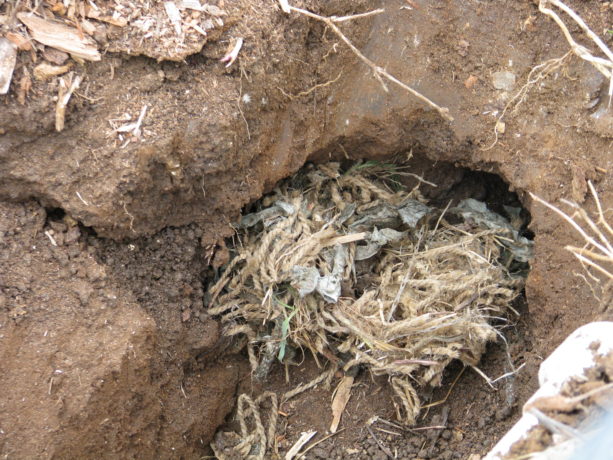
We pulled back sheet mulch on the pathways and found incredible fungal activity, loads of worms and moisture.
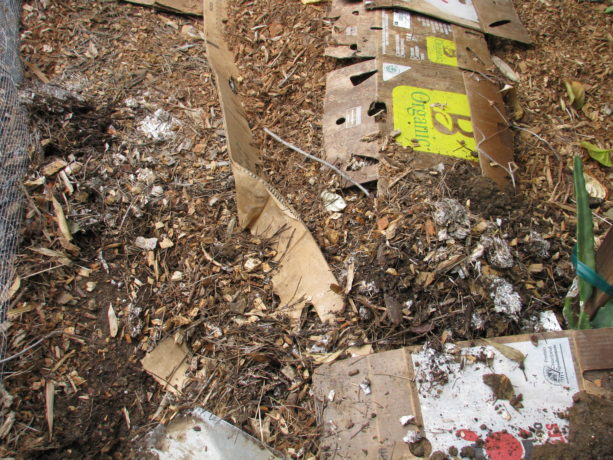
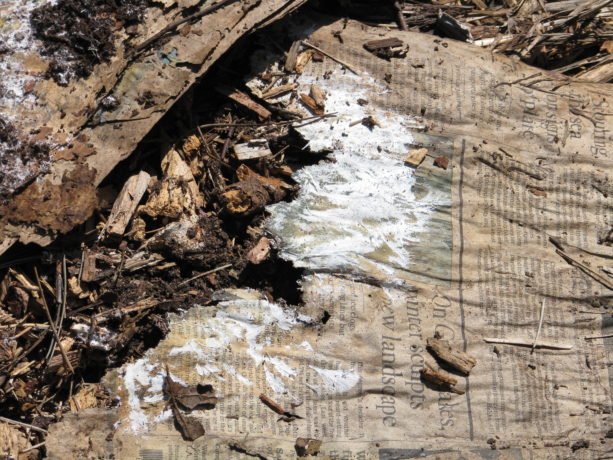
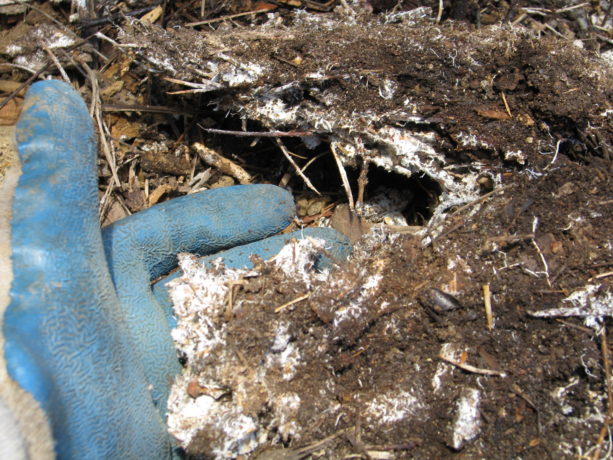
While trenching we found gopher tunnels into the garden, and often would find dirt in the trench under the holes as the gopher backfilled, trying to make a new dirt tunnel across the channel.

Along one active area I buried the wire, but also wanted to retard the invasion of Bermuda grass. Along with the wire I buried a couple of pieces of scrap 3/4″ plywood to make a physical boundry for the grass, and these happen to be right where a gopher tunnel was. The next morning I was in the garden and I heard a strange thumping sound, and finally realized that it was coming from underground where the wood was buried. The gopher was trying to get through the new wooden fence and wire!
We’ve buried wire around three sides (40′ long by 20 – 24″ deep), and are slaving away at the last trench where the most gopher activity is.
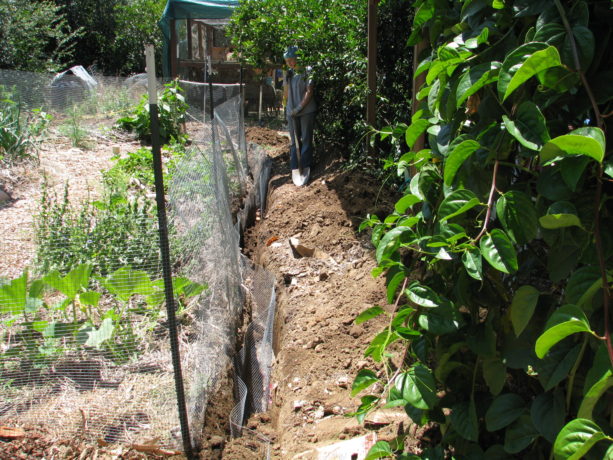
As we’re working, we’re also using a spade to collapse gopher tunnels from the back out, and using the smucky water (this batch is made from onion peels and bits leftover from pickling whole onions) to ruin those tunnels. We’re herding the gopher out of the garden and fertilizing at the same time.
We’ve a couple more bouts left to go before finishing; my partially numb hands are ready to be done with it. Narrow trenches in heavy clay right next to a fence aren’t easy to work in, which slows the process down a lot. Knowing that we’re being true to what we believe in, to not trap and kill in our garden, makes it all worth the work. The gopher is welcome to all the weed roots it wants elsewhere.

2 Comments
Diane
Yes, gophers are an essential part of our ecosystem. Good point. Taking preventative measures when planting is far better than spending lots of money long-term on traps, baits (and their lethal effect on the food chain), and replacement plants.
Miranda
Gophers also benefit an ecosystem by mixing soil layers and bringing organic matter underground. Unfortunately, those functions are signified by the most blood-riling sights for any gardeners sharing space with gophers: the Mound of excavated dirt and the Disappearing Plant. Maybe thinking about the good they’re doing in the long view will help you take a deep breath and move on to positive actions rather than teeth gnashing next time you see those gopher signatures in your yard….? 😉